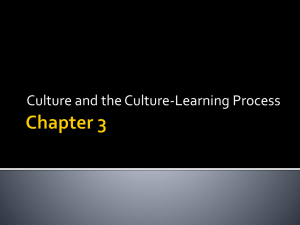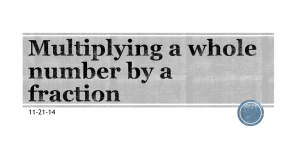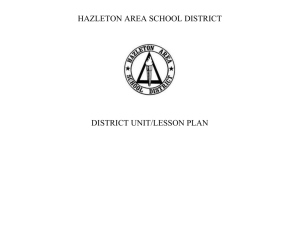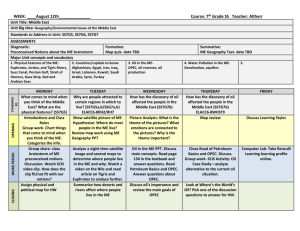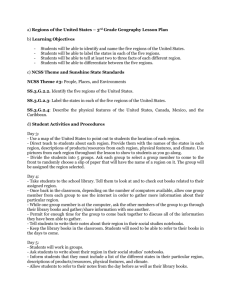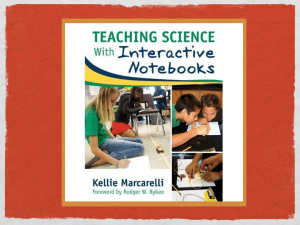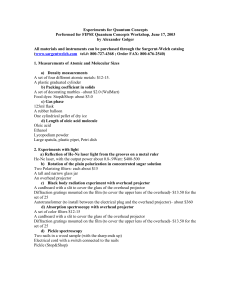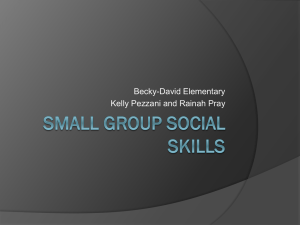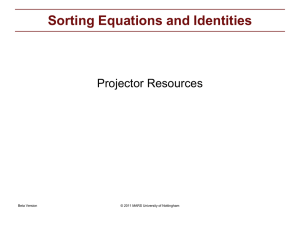Unit Plan - Hazleton Area School District
advertisement
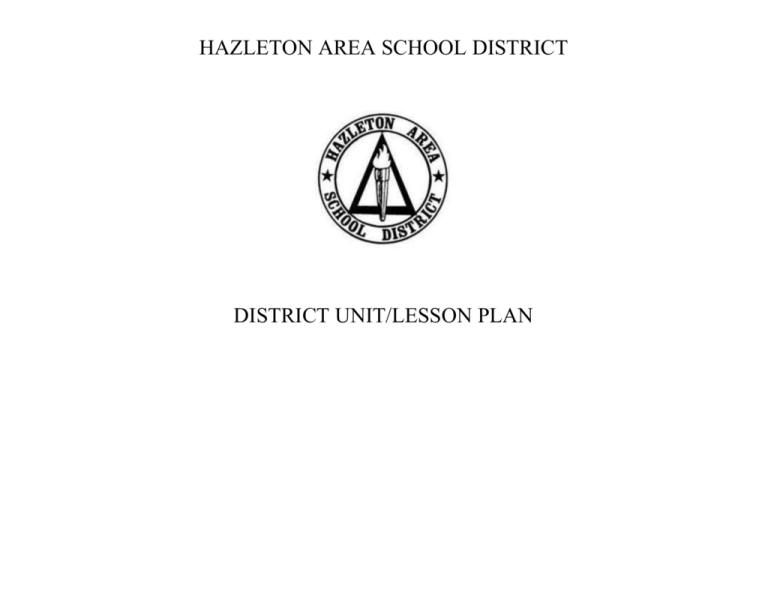
HAZLETON AREA SCHOOL DISTRICT DISTRICT UNIT/LESSON PLAN Teacher Name : Jessica Dolan Subject : Science Start Date(s): March 9, 2015 Grade Level (s): 4 Building : MKEMS Unit Plan Unit Title: Responses of Living Things Essential Questions: How do living things sense and react to changes in their environment? What is the difference between internal and external stimuli? What are the differences between learned and inherited behaviors? What is an instinct? Standards: PA Core Standards: CC.8.5: Reading Informational Text: Students read, understand, and respond to informational text- with emphasis on comprehension, making connections among ideas and between texts with focus on textual evidence. CC.8.6: Students write for different purposes and audiences. Students write clear and focused text to Convey a well-defined perspective and appropriate content. S4.B.1.1.1 Identify life processes of living things. Summative Unit Assessment : Summative Assessment Objective Students will be able to explain the difference between stimulus and response by citing examples of each. Assessment Method (check one) ____ Rubric ___ Checklist __X__Unit Test ____ Group ____ Student Self-Assessment ____ Other (explain) DAILY PLAN Objective (s) Students will be able to define key vocabulary from the lesson and provide examples. DOK LEVEL 1, 2 Activities / Teaching Strategies 1. 2. 1 Students will use examples of cause and effect relationships to distinguish between a stimulus and response. 1, 2 Small Group- Students will play a matching game with partners using their flashcards. 1. Whole Group- The class will read Lesson 1. 2. Small Group- Students will break into groups of 4 and complete the cause and effect graphic organizer using stimulus/ response examples from the Lesson. 3. 3 1. 3 2. 4 Students will be able to define key vocabulary from the lesson and provide examples. 1, 2 1. 2. I W S Whole Group-They will match the words/ definitions to pictures presented on a PowerPoint presentation by holding up the vocabulary word they think matches the picture presented. 3. 2 Students will write their own notes on the main concepts taught in the lesson by using text evidence from the lesson with small groups. Independent Practice-Students will use context clues to find definitions within the lesson in their textbook, which they will put onto flashcards. Grouping Day Independent Practice- Students will work independently on the lesson 1 review. They will finish for homework if unable to complete in class. Small Group- Students will break up into small groups to re-read the lesson. They will discuss and highlight the most important points of the lesson by coming up with a set of 3-4 notes in their own words, written on “sticky notes.” Whole Group- Each group will share their notes with the whole class to compile a set of class notes on the overhead projector that focuses on the most important points of the lesson. Independent Practice-Students will use context clues to find definitions within the lesson in their textbook, which they will put onto flashcards. Whole Group-They will match the words/ Materials / Resources Textbooks Notebooks Overhead projector PPT presentation with pictures related to each lesson Flashcards. Assessment of Objective (s) Formative- “Exit ticket” vocabulary quiz Summative- None Student Self - Assessmentflashcard practice W S I Textbooks Graphic Organizer Notebooks Formative-Graphic Organizer Summative- none Student Self - AssessmentHomework Assignment: Lesson 1 Review S W Textbooks “Sticky Notes” Overhead Projector Notebooks Formative-group notes Summative- none Student Self - Assessment- group notes I W S Textbooks Notebooks Overhead projector PPT presentation with pictures related to each lesson Flashcards. Formative- “Exit ticket” vocabulary quiz Summative- None definitions to pictures presented on a PowerPoint presentation by holding up the vocabulary word they think matches the picture presented. 5 Students will draw conclusions from the text to determine which behaviors are learned and which are inherited. They will compare and contrast them using a Venn Diagram. 2, 3 3. Small Group- Students will play a matching game with partners using their flashcards. 1. Whole Group- The class will read Lesson 1. 2. Small Group- Students will break into groups of 4 and complete Venn Diagrams to compare and contrast learned vs. inherited behaviors. 3. 6 Students will use facts from the text to write a persuasive article in which they must convince someone that spiders are born able to spin webs. 3 1. 2. 7 Students will write their own notes on the main concepts taught in the lesson by using text evidence from the lesson with small groups. 3 1. 2. 8 Students will relate the text to themselves by reflecting on a behavior that they had to learn. They will then write an explanatory essay in order to teach someone else the steps involved in doing what they’ve learned. 4 1. 2. Independent Practice- Students will work independently on the lesson 2 review. They will finish for homework if unable to complete in class. Small Group- Students will be given an OREO graphic organizer. They will all start with the same opinion, “Spiders are born knowing how to spin webs.” They will discuss with their small groups facts from the lesson that prove their statement is true (Reasons) and write them on the organizer. Whole Group- Each group will share the facts they came up with to support their opinion. Small Group- Students will break up into small groups to re-read the lesson. They will discuss and highlight the most important points of the lesson by coming up with a set of 4 notes in their own words, written on “sticky notes.” Whole Group- Each group will share their notes with the whole class to compile a set of class notes on the overhead projector that focuses on the most important points of the lesson. Whole Group- The class will discuss the Venn Diagrams from the previous day to compile a complete list of inherited and learned behaviors from the lesson and determine the differences between them. We will then discuss some behaviors that they have had to learn in their lives. Small Group- The students will then come up Student Self - Assessmentflashcard practice W S I Textbooks Venn Diagrams Notebooks Formative-Venn Diagrams Summative- none Student Self - AssessmentHomework Assignment: Lesson 2 Review Graphic Organizer (OREO) Overhead Projector Notebooks S W I S W Formative- Graphic Organizer Summative- none Student Self - Assessment-none Textbooks “Sticky Notes” Overhead Projector Notebooks Formative-group notes Summative- none Student Self - Assessment- group notes W S I BLM A100 (Unit Resource Folder) Notebooks Formative- lists of learned behaviors Summative- none Student Self - Assessment-none with a list in small groups of some behaviors they have had to learn. 9 Students will be able to recall concepts taught in Chapter 4 through completion of a review game/ study guide. 1 3. Independent Practice- The students will then have a learned behavior from the list developed with their group and write an explanatory essay teaching someone else to do what they’ve learned. 1. Whole Group- Students will compete in a review game in which they break into 3 teams and take turns coming to the front of the class to answer a question from the study guide on behalf of their team. W Study Guide Textbook Notebook Formative- Study Guide Summative- none Student Self - Assessment-none 10 Students will be assessed on all major concepts in Chapter 4. 1. Independent Practice- Students will take the Ch. 4 test. I Chapter 4 Test Formative-none Summative- Chapter 4 Test Student Self - Assessment-none
